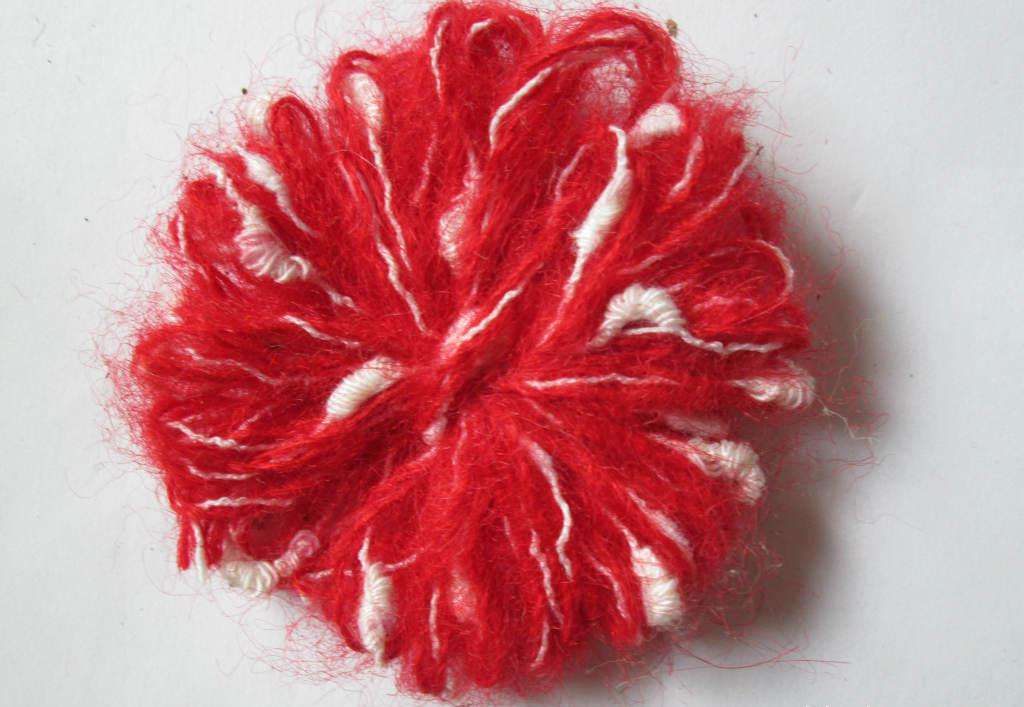How are fancy yarns classified?
How are fancy yarns classified? Fancy yarns can be roughly divided into the following categories based on their processing methods: first, fancy yarns processed by ordinary spinning systems such as chain yarns, gold and silver yarns, and silk threads; The second type is colored yarn processed by dyeing methods, such as mixed color yarn, printed yarn, rainbow yarn, etc; The third type is the fancy yarn processed by the fancy twisting machine, which can be divided into super feeding types such as spiral yarn, small braid yarn, loop yarn, and control types such as big belly yarn, knot yarn, etc. according to the different feeding speeds and variations of the core yarn and decorative yarn; The fourth type is special fancy thread such as chenille thread, core spun thread, brushed thread, flocking thread, etc. Fancy yarn has a fancy appearance for decoration, with many varieties and various production methods. The structure of fancy yarn consists of core yarn, decorative yarn, and fixed yarn. Core yarn can withstand strong forces and is the backbone yarn; The decorative yarn is twisted and wrapped around the core yarn to create an effect; The fixed yarn is wrapped around the outer circumference of the decorative yarn in the opposite twist direction to fix the pattern, but there are also cases where the fixed yarn is not necessary. The following introduces the titles and characteristics of several common fancy yarns (threads):
1. The knot thread decorative yarn is repeatedly twisted back and wrapped in the same place.
2. Spiral thread is made by combining and twisting two yarns of different fineness, twist, and type.
3. The thick and soft fiber bundles with coarse threads are attached to the core yarn and wrapped with solid yarn.

4. The looped decorative thread forms a closed circle shape, wrapped with solid yarn on the outside.
5. The knotted yarn is wrapped around the core wire in a spiral manner, but is thrown out in a circular shape at a certain distance.
6. The chenille thread is sandwiched between the core thread and the horizontal decorative yarn. There is plush on the loose end of the decorative yarn.
7. The diamond shaped metal wire is wrapped around the outer periphery of the metal core wire (made of aluminum foil or sprayed metal material covered with a transparent maintenance film) in another color, with fine decorative and fixed wires, and has a diamond pattern effect.
Application of fancy yarn
Fancy yarn greatly ensures people's travel and maintains their health.
At present, the best raw material for fancy yarn is 100% imported Australian wool, namely ultra-fine Merino wool. Belonging to imported raw materials, the country of origin includes Australia, New Zealand, Uruguay, etc. Among them, New Zealand and Uruguay are the best, followed by New Zealand.
Imported Australian wool fancy yarn can be used to weave sweaters, pants, scarves, hats, gloves, etc. It is widely used and maintains the skin, making it a great product for fancy weaving.
Article source: Fancy Thread Manufacturer
-
05-27
The reason why fabrics containing spandex are prone to yellowing
Spandex is a commonly used fiber variety in our daily lives, characterized by good elasticity, low fineness, high elastic modulus (cracking elongation can reach 400-800), and low specific gravity. Spa
-
04-24
Colored non dyed nylon with synthetic fiber raw material
The current conventional fiber coloring mostly uses yarn dyeing method, which has long process, high loss, high cost, and the product has color difference and low color wash fastness. Yarn is prone to
-
03-26
What are the characteristics of non dyed spandex?
Non dyed spandex has also been widely used in recent years. Non dyed spandex fiber can be blended with fibers such as nylon, polyester, acrylic, cotton, wool, etc., which can give fabrics excellent el
-
02-24
The influence of yarn structure on fabrics
The basic characteristics of yarn include its appearance and shape, twisting characteristics, fiber transfer and distribution characteristics in the yarn, as well as the surface fuzz and internal loos
